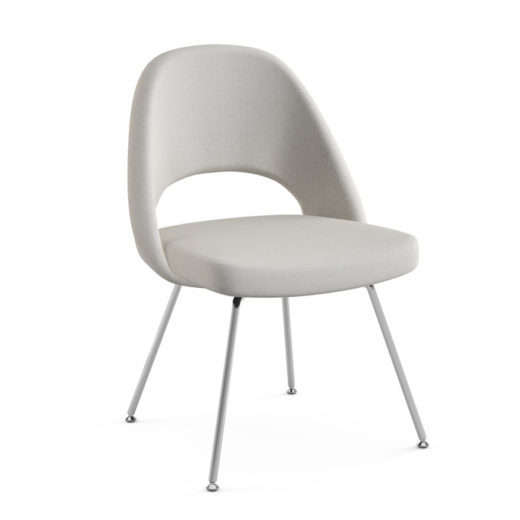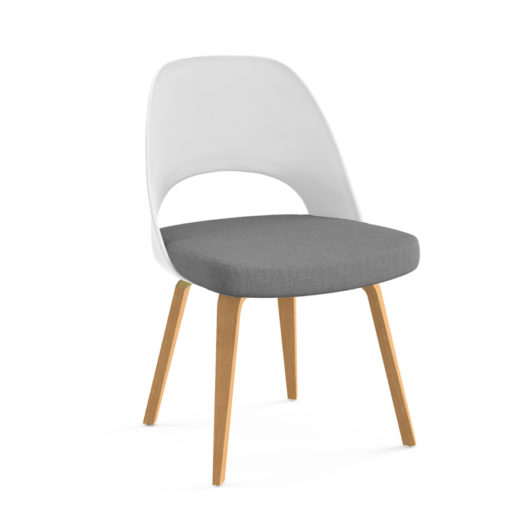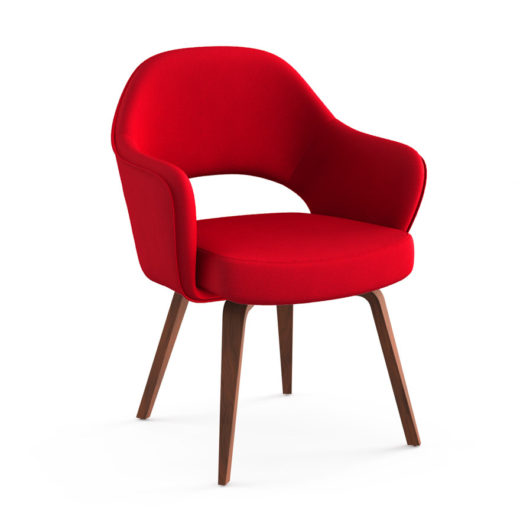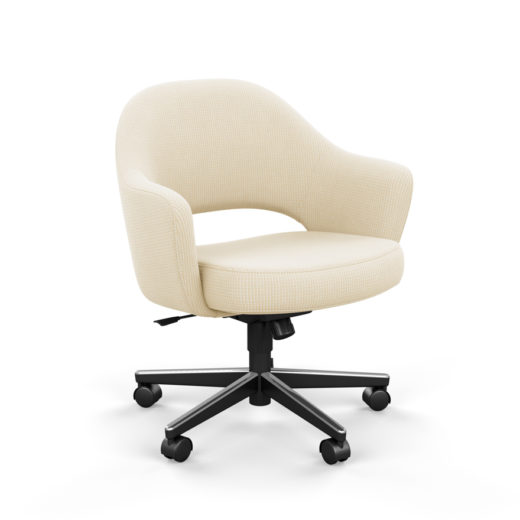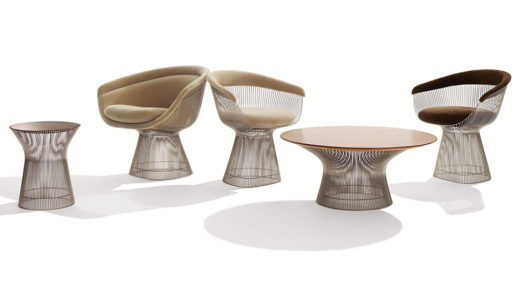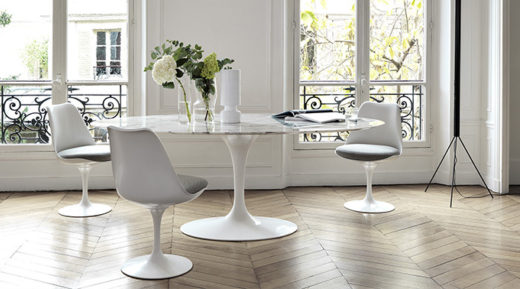Design Pulse
Original Design: Saarinen Executive Chair
Eero Saarinen designed furniture as a means to problem-solve. Each of his works had a distinct vocabulary of form, startlingly different from the other. The Model 71 and 72 Chairs – now known as the Saarinen Executive Chairs – were, like many of Eero’s designs, a unique expression that solved for material and form in an exciting era of technological advancement.
Eero Saarinen and Florence “Shu” Schust met while studying at the Cranbrook Academy of Art in Bloomfield Hills, Michigan. Orphaned at the age of twelve, Florence was taken under the wing of renowned architect and Cranbrook Director Eliel Saarinen – Eero’s father. She eventually became an extended member of the Saarinen family, developing a sibling-like bond and lifelong friendship with the young Saarinen.
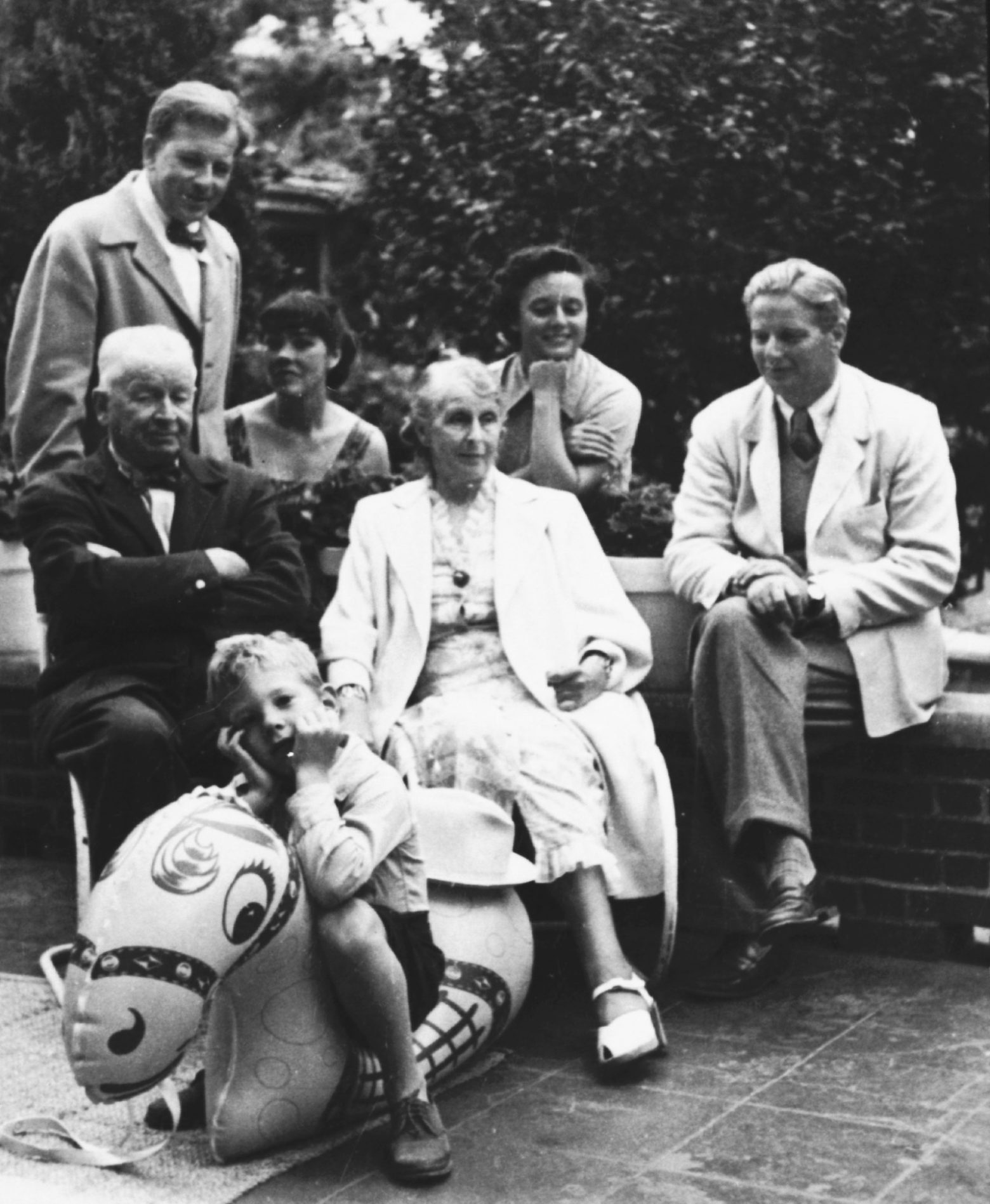
The design duo – bound by a shared ambition and passion for Modernism – closely collaborated in their professional endeavors that followed Cranbrook. During Eero's rise to becoming a highly acclaimed architect, Florence was leading a burgeoning furniture company. The two strove to break boundaries in design, together leading the American Modern movement.
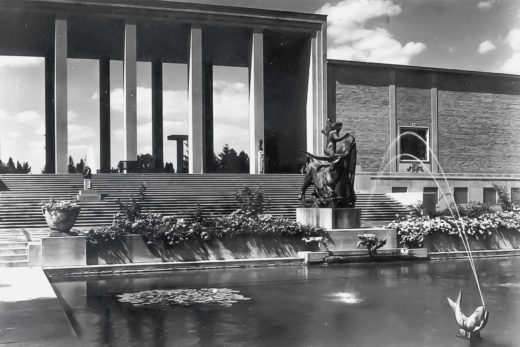
In 1941, Eero Saarinen and Charles Eames, Cranbrook faculty at the time, won the MoMA Organic Design in Home Furnishings Competition for their work in bent plywood. The designs – visually striking and wholly Modern – were revolutionary in their construction. Bending plywood in three directions had heretofore been impossible (designer Alvar Aalto had only been able to bend plywood in two directions) and the chairs had a sensitivity to the human body unseen in furniture of the time. Like Saarinen’s entire body of work, the winning design was a glimpse of what the future of furniture design held.
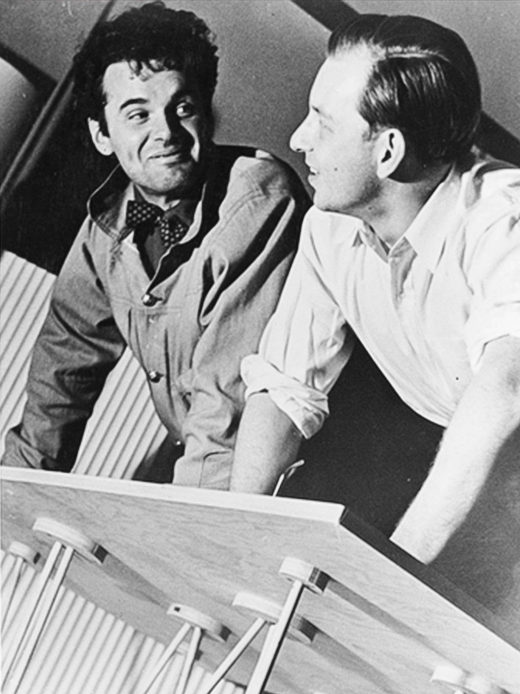
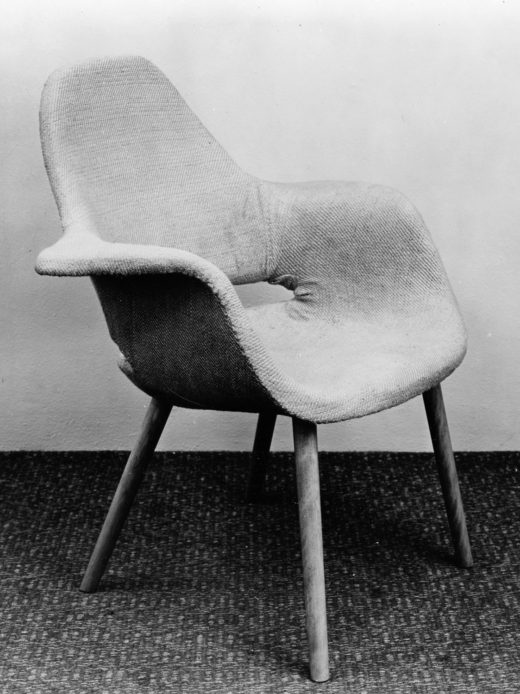
The 70 Series
Florence herself considered the 70 Series as, “the biggest excitement in the development of Eero’s furniture.” The Model 71 and 72 Chairs – developed several years after the MoMA competition – had the same organic vocabulary and ergonomic design of Saarinen and Eames’ prize-winning designs. However this time around, they were made with plastic resin and later molded fiberglass, allowing for an even-more dynamic form.
After the success of the Womb Chair – Shu persuaded Eero to tackle the big one first – Eero shifted his focus towards standard task seating. In 1948, Knoll introduced the Model 72, a smaller chair based on the technology of the Womb Chair. Two years later, the armed version made its debut as the Model 71.
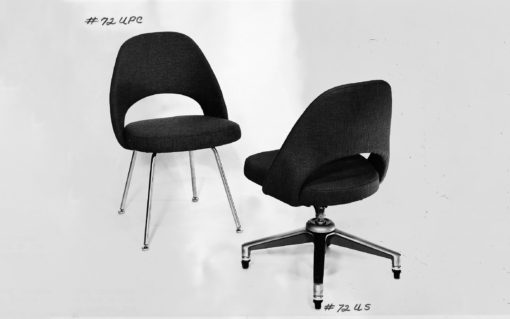
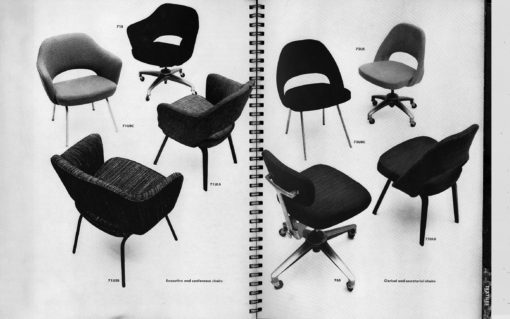
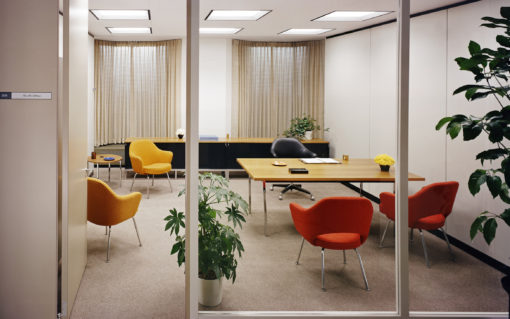
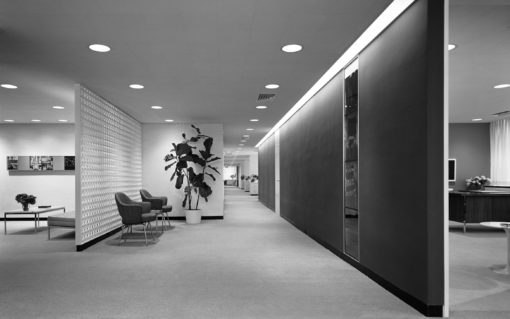
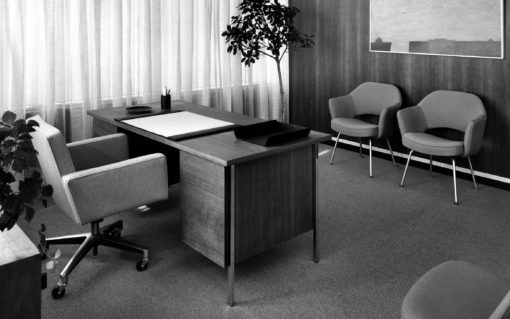
Eero shared Florence’s conviction in “total design” – a concept passed down by mentors Eliel Saarinen and Ludwig Mies van der Rohe. “Saarinen readily acknowledges a number of his father’s influences,” wrote TIME in a 1956 profile of the architect, “a sense of spaciousness and orderliness, the complementing of existing structures, resistance to set a style, a fondness of expressive materials.” The Model 71 and 72 had this spirit.
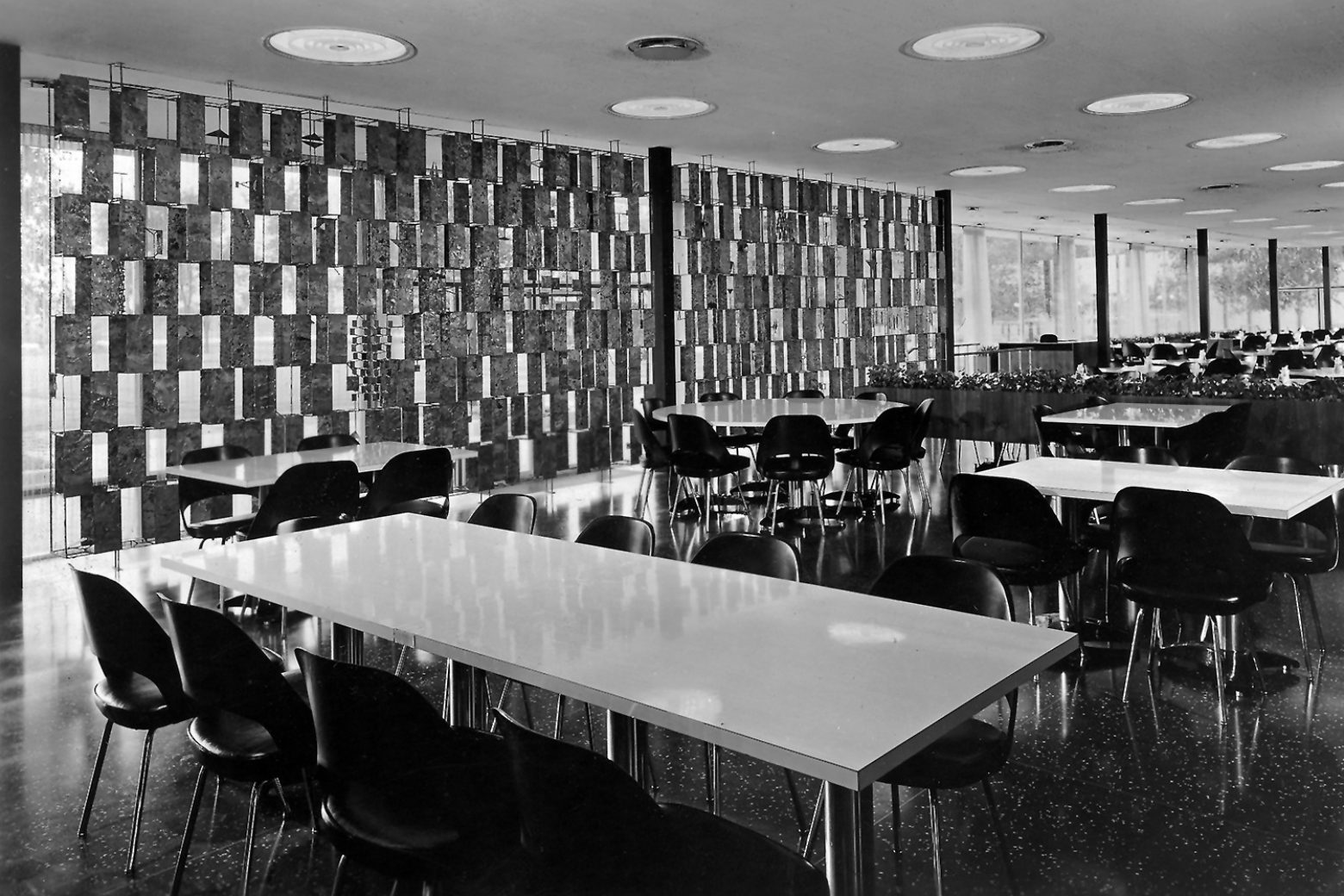
Forward-looking in their design, the Model 71 and 72 Chairs were ideated for the large-scale corporate architectural projects designed by Eero and the Knoll Planning Unit, led by Florence. Saarinen specified thousands of the chairs General Motors Technical Center in Warren, Michigan – then the largest and most influential corporate complex of its time. Florence recalled the project as, “the first real event in using one of Eero’s designs in a big commercial establishment.” Alongside a vast metal sculpture by Harry Bertoia, rows of the Model 72 Chair donned the GM cafeteria.
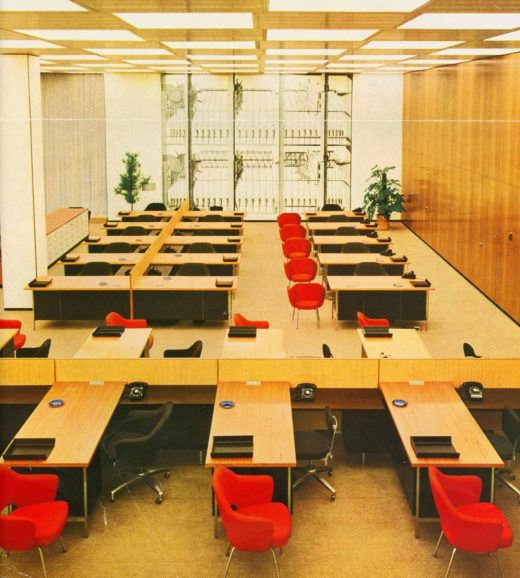
A room is like a piece of art: it is just one idea.
General Motors set the stage making the Model 71 and 72 the go-to task chair for the Planning Unit's projects. Connecticut General Life Insurance Company, Cowles Publications, CBS, the First National Bank of Miami and Trident Oil all joined the ranks. The 70 Series became a staple of the finest corporate interiors in America.
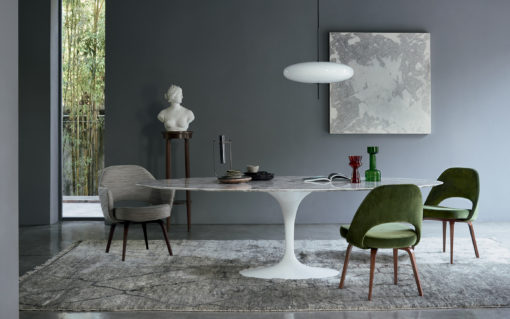
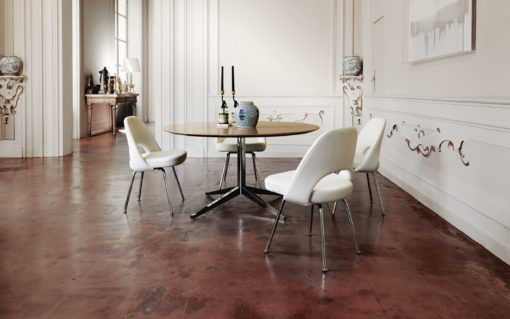
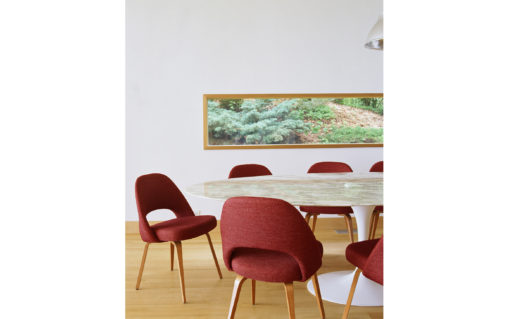
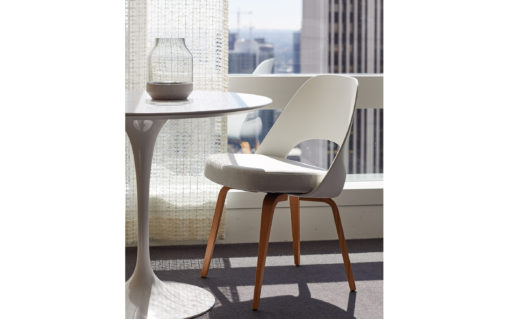
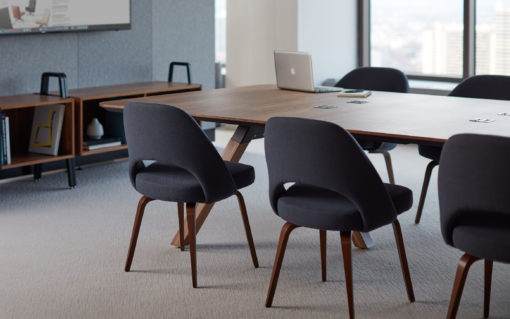
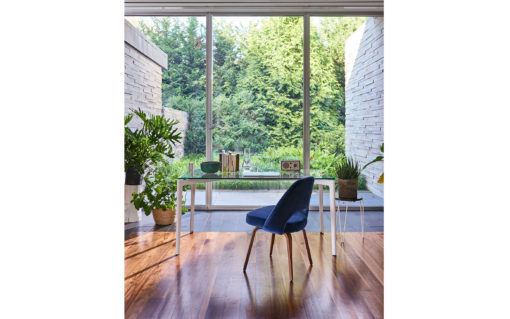
Soon enough, the versatile chairs found their way into the homes of many. The Model 71 and 70 Chairs – now adorning the dining and sitting rooms of America – epitomized furniture made for living and working. Since then, the Saarinen Executive Chairs oscillate between the workplace and the home as a suitable and beautiful choice for each.






